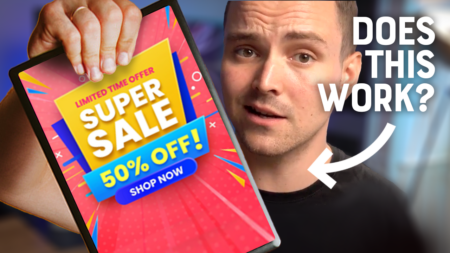In the race to rank on Google, small business owners often focus on tactics like social media ads, blogging, or keyword research—while missing one of the most foundational pillars of search visibility: on-page SEO. Unlike off-page strategies that rely on third-party signals like backlinks, on-page SEO is entirely within your control. It’s the craft of optimizing each individual web page to improve search rankings, user experience, and conversion potential. Yet, this crucial element is often treated as an afterthought or oversimplified to just inserting keywords.
What most small businesses don’t realize is that search engines have evolved to read pages much like humans do. Google now evaluates relevance, structure, design, and intent—making on-page optimization both a technical and creative process. This article will walk you through the often overlooked aspects of on-page SEO specifically for small business websites, offering practical, expert-level strategies you can implement today to turn your website into a high-performing asset.
Why Structured Content Matters For On-page Seo:
“One of the most overlooked yet powerful on-page SEO strategies is using structured content. Proper use of header tags (H1, H2, H3), concise meta DESCRIPTIONS, and keyword-rich URLs creates a clear hierarchy that search engines can crawl efficiently. Small businesses should focus on one primary keyword per page, placing it strategically in the title, headers, and opening paragraph. Optimizing image alt text and internal linking also boosts crawlability and user experience. These practices not only improve rankings but also increase dwell time and reduce bounce rates—key metrics for SEO success in today’s algorithm-driven landscape.” – Jeff Romero, CEO of Octiv Digital
Writing For Both Humans And Algorithms By Optimizing Content Structure
“One of the most powerful things small businesses can do is structure their page content to satisfy both human attention and search engine logic. This means using short paragraphs, descriptive subheadings, bulleted lists, and clear calls to action. These formatting choices keep users engaged, reduce bounce rates, and help search engines scan and understand the content efficiently.
Money Note: If an extra $1K–$5K/month would change your 2026 goals (debt, savings, travel, freedom), you’ll want to catch this: free live workshop from a freelancer who’s earned $4M+ online. No fluff. No gimmicks. A real roadmap. 👉 Watch the training or save your seat here »
In addition, Google now prioritizes content that aligns with search intent. Are users looking to buy, learn, compare, or find local results? Matching your content format to this intent—whether through product pages, how-to guides, or location-based info—gives your page a better chance at ranking and retaining users.” – Robert Bolder from Trackity
To improve content structure, follow these tips:
- Break up long text with H2s every 300–400 words.
- Use bullet points to highlight benefits or steps.
- Bold key phrases to enhance scanability.
- Include relevant internal links naturally within paragraphs.
Using Primary And Secondary Keywords Intelligently Across The Page
“Keyword placement is still vital in 2025, but the strategy has become more nuanced. Overusing your target keyword can trigger spam signals, while underusing it can confuse Google about the page’s topic. The key is to place your primary keyword in strategic locations—such as the title tag, URL, meta description, H1, and first 100 words of the content.
Beyond that, secondary keywords (also called LSI or related keywords) should be used naturally throughout the body. These provide semantic depth and context, helping search engines understand the broader meaning of your page. For example, if your primary keyword is “small business SEO,” secondary keywords might include “local visibility,” “on-page optimization,” and ranking factors.” – Nell VH, Founder at JetDigitalPro
Optimizing Image Elements For Speed And Search Discoverability
“Images are essential for engagement, but they can also impact site speed and SEO if not handled correctly. Search engines cannot “see” images—they rely on alt text, filenames, and structured data to interpret visual content. Small businesses often forget to include descriptive alt attributes or use large, uncompressed files that slow down load time.
Every image on your page should serve a purpose—whether it’s demonstrating a product, explaining a concept, or supporting branding. Beyond compression and responsiveness, you should also consider using image schema markup to make your images eligible for visual search results.” – Tiffany Payne, Head of Content at PharmacyOnline.co.uk
Image optimization tips:
- Use descriptive filenames (e.g., “local-seo-consulting.jpg”).
- Add concise, keyword-relevant alt text.
- Compress images using tools like TinyPNG or WebP.
- Make images mobile-responsive to preserve layout quality.
Creating Seo-friendly Url Structures That Enhance Crawlability:
A clean, keyword-rich URL provides both user clarity and search engine guidance. URLs that are too long, filled with unnecessary parameters, or missing keywords can reduce crawl efficiency and harm rankings. For small businesses, URLs should reflect the page topic simply and clearly—ideally using the target keyword without filler words.
For example, use /services/local-seo instead of /page-id=12834?section=marketing. URLs should also follow a logical hierarchy, especially if your site includes nested categories or blog content. This helps bots understand site structure and improves breadcrumb generation in the SERPs.
Using Internal Linking Strategically To Guide Search Engine Crawlers:
Internal links serve two critical functions—they help users navigate your site and help search engines discover and rank your pages. Small businesses often forget to link between their own service pages, blog posts, and landing pages. This can leave important content orphaned and reduce the overall authority flow through your site.
Strategic internal linking involves placing anchor text that reflects the topic of the destination page. For instance, if you link to a page about “local SEO packages,” don’t use generic text like “click here”—use something like “our local SEO packages for small businesses.” This sends a strong topical signal to search engines and helps build contextual relationships between pages.
Internal linking tips:
- Link from blog posts to core service/product pages.
- Use keyword-rich anchor text sparingly.
- Avoid linking to the same page multiple times from one post.
- Audit links quarterly to remove broken or outdated connections.
Improving Technical On-page Elements To Support Organic Ranking:
“On-page SEO isn’t just about visible content—it also involves technical elements that influence how your page is interpreted by crawlers. This includes things like mobile responsiveness, page speed, structured data, canonical tags, and meta robots directives. Even one misconfigured tag or a slow mobile version can reduce rankings significantly.
One of the easiest wins is making your site mobile-first. Google prioritizes mobile indexing, so your site needs to load quickly, display properly on all devices, and avoid popups or layouts that block key content. In addition, adding structured data markup (like FAQ schema or product schema) can make your listings stand out in SERPs, improving click-through rates.” – Alex Taylor, Head of Marketing at CrownTV
Using Meta Descriptions To Boost Click-through Rates From Serps:
“While meta descriptions don’t directly influence rankings, they have a major impact on user behavior. A compelling meta description can dramatically improve CTR—which is a behavior signal that Google uses to evaluate relevance and engagement. Small business sites often skip custom meta descriptions or leave them duplicated across pages.
A well-crafted meta description should summarize the page, include the primary keyword, and compel the user to click. Think of it as ad copy for your organic listing. Google may rewrite your meta, but providing one gives you control over what users see in search results.” – James Hans of Haro Builder
Tips for effective meta descriptions:
- Keep it under 160 characters to avoid truncation.
- Include your target keyword early.
- Use action-oriented language (e.g., “Discover”, “Get”, “Find out”).
- Address a user problem or benefit directly.
Conclusion:
On-page SEO is often perceived as basic or repetitive, especially by small business owners juggling multiple roles. But when applied with intention and expertise, it becomes one of the most powerful levers for driving traffic, improving user experience, and converting visitors into customers. The strategies discussed in this guide go beyond surface-level checklists—they require thought, alignment with search intent, and consistent execution.
By mastering the overlooked art of on-page SEO, small business sites can compete with larger players in the search results, often with fewer resources. Every headline, image, internal link, and snippet matters. Small steps, when strategically implemented across your pages, create long-term growth and a strong foundation for all your future digital marketing efforts.

Keep the conversation going...
Over 10,000 of us are having daily conversations over in our free Facebook group and we'd love to see you there. Join us!


